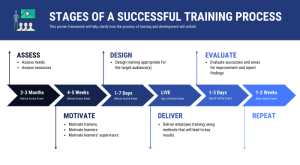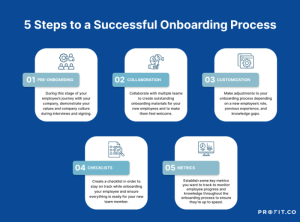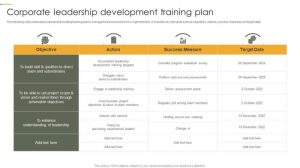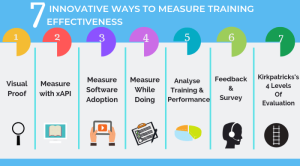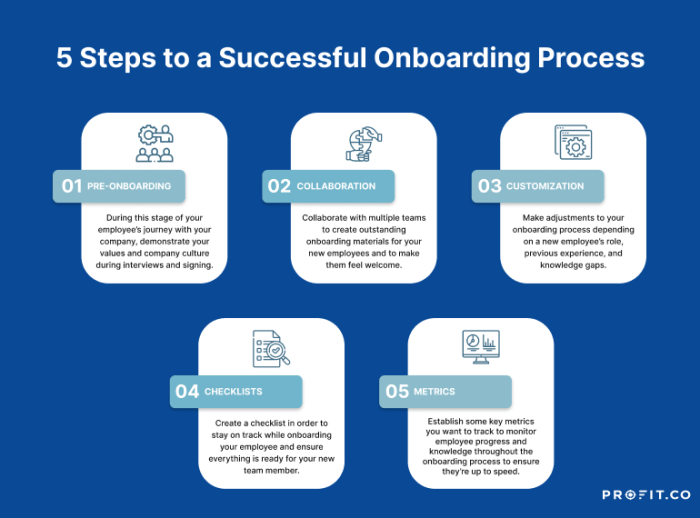
Successfully integrating new employees is crucial for any organization’s growth. Effective employee onboarding training programs are no longer a mere formality; they’re a strategic investment that directly impacts productivity, retention, and overall company success. This guide delves into the essential components of creating and implementing impactful onboarding experiences, exploring various program structures, content development strategies, and methods for measuring their effectiveness.
From defining the key elements of a robust onboarding program to leveraging technology for enhanced efficiency, we’ll examine best practices, address common challenges, and highlight the synergistic relationship between effective onboarding and corporate growth. We’ll also explore how to align training initiatives with broader business objectives, ultimately fostering a culture of continuous learning and development.
Content Development for Employee Onboarding Training

Effective onboarding is crucial for employee success and retention. A well-structured program ensures new hires quickly understand their roles, integrate into the company culture, and become productive members of the team. This section details the essential components of a comprehensive employee onboarding training program.
Essential Onboarding Topics
A robust onboarding program should cover several key areas. These include a thorough introduction to company culture, values, and mission; a detailed explanation of company policies and procedures, including those related to safety, compliance, and conduct; and comprehensive job-specific training to equip new employees with the necessary skills and knowledge to perform their roles effectively. Beyond these core components, consider including information on benefits, payroll processes, and available resources for employee support and development.
Furthermore, integrating opportunities for social interaction and team building can foster a sense of belonging and accelerate the integration process.
Sample Training Modules: Marketing Coordinator Role
This section provides example training modules for a Marketing Coordinator position, focusing on three key aspects of the role: social media management, email marketing, and content creation.
Social Media Management Module
This module will cover the basics of social media marketing for the company’s various platforms. It will include training on scheduling posts using Hootsuite, engaging with followers, monitoring brand mentions, and analyzing social media analytics using tools like Google Analytics. The module will also address the company’s social media guidelines, including brand voice and tone, content style, and crisis communication protocols.
Practical exercises will involve creating sample social media posts and responding to hypothetical customer interactions.
Email Marketing Module
This module focuses on creating and implementing effective email marketing campaigns. Topics covered will include email list segmentation, email copywriting best practices, A/B testing, and email automation using marketing automation software like Mailchimp. The module will emphasize complying with anti-spam regulations like CAN-SPAM. Trainees will learn to track email campaign performance using relevant metrics and will participate in a hands-on exercise designing an email campaign for a specific product launch.
Content Creation Module
This module covers the process of creating engaging and informative marketing content. It will include training on various content formats, such as blog posts, website copy, infographics, and video scripts. Emphasis will be placed on best practices, content repurposing, and ensuring brand consistency across all content channels. Participants will be guided through a practical exercise of creating a blog post based on a given topic and company guidelines.
Interactive Onboarding Activities
Interactive activities significantly improve engagement and knowledge retention during onboarding.
The following interactive activities can enhance the learning experience:
- Interactive Quizzes and Games: Using online quiz platforms or gamified learning tools to assess understanding of key concepts and policies. For example, a fun quiz on company history and values.
- Role-Playing Scenarios: Simulating real-world work situations to practice skills and problem-solving. For example, a role-play where a new employee handles a difficult customer inquiry.
- Team-Based Projects: Collaborative projects that allow new hires to work together and build relationships with their colleagues. For instance, creating a marketing campaign proposal as a team.
- Mentorship Programs: Pairing new employees with experienced colleagues for guidance and support. A mentor can provide personalized feedback and answer questions.
- Onboarding Scavenger Hunts: A fun and engaging way to introduce new hires to the office space, team members, and company resources. The scavenger hunt could involve solving puzzles or completing tasks related to company history or policies.
The Role of Technology in Employee Onboarding
Integrating technology into employee onboarding programs is no longer a luxury but a necessity for modern organizations. It streamlines the process, improves the new hire experience, and ultimately contributes to increased employee retention and productivity. A well-designed technological approach allows for a more engaging, efficient, and scalable onboarding experience, benefiting both the employee and the company.Technology significantly enhances the efficiency and effectiveness of the onboarding process.
Manual processes, such as paper-based paperwork and in-person training sessions, are time-consuming and can lead to inconsistencies. Automated systems, on the other hand, allow for faster processing of information, improved tracking of progress, and consistent delivery of onboarding materials. This frees up HR and management to focus on more strategic initiatives, while simultaneously ensuring a smoother transition for new employees.
Technological Tools for Enhanced Onboarding
The right technological tools can transform the onboarding experience from a tedious administrative task into a positive and engaging introduction to the company culture and work environment. Careful selection of tools ensures a seamless integration with existing systems and addresses specific onboarding needs.
- Learning Management Systems (LMS): LMS platforms like Moodle, Canvas, or Cornerstone provide a centralized repository for all onboarding materials, including videos, presentations, documents, and assessments. They track employee progress, automate reminders, and facilitate communication between new hires and their managers.
- Online Training Platforms: Platforms like LinkedIn Learning, Coursera, or Skillshare offer access to a wide range of training courses, allowing employees to learn at their own pace and focus on specific skills relevant to their roles. This flexibility enhances engagement and allows for personalized learning paths.
- Video Conferencing Tools: Tools such as Zoom, Microsoft Teams, or Google Meet facilitate virtual introductions, team meetings, and one-on-one sessions with managers and colleagues. This is particularly beneficial for remote onboarding or for fostering connections within geographically dispersed teams.
- Employee Communication Platforms: Platforms like Slack or Microsoft Teams can be used to create dedicated onboarding channels, fostering communication and collaboration among new hires and their teams. This helps new employees quickly integrate into the company culture and build relationships with colleagues.
- Human Resource Information Systems (HRIS): HRIS systems like Workday or BambooHR automate the administrative aspects of onboarding, such as paperwork, benefits enrollment, and payroll setup. This reduces administrative burden on HR and ensures accurate and timely processing of information.
Corporate Growth and Corporate Training
Effective corporate training programs are not merely a cost; they are a strategic investment directly impacting a company’s growth trajectory. By aligning training initiatives with overarching business objectives, organizations can cultivate a highly skilled workforce capable of driving innovation, improving efficiency, and ultimately, boosting the bottom line. This section explores best practices for developing and implementing impactful corporate training programs that contribute meaningfully to organizational success.
Aligning Training with Business Objectives
A successful training program starts with a clear understanding of the organization’s strategic goals. This involves identifying skill gaps, analyzing performance data, and forecasting future workforce needs. For instance, if a company is expanding into a new market, training programs should focus on developing employees’ understanding of that market’s unique characteristics and customer base. Conversely, if the company is implementing new software, training should prioritize proficiency in that technology.
This alignment ensures that training resources are used effectively and contribute directly to achieving business objectives. The process involves a collaborative effort between HR, departmental managers, and subject matter experts to pinpoint specific areas for improvement and develop tailored training solutions.
Best Practices for Engaging and Effective Training
Creating engaging and effective training requires a multi-faceted approach. Firstly, training should be tailored to different learning styles, incorporating diverse methods such as interactive workshops, online modules, mentoring programs, and on-the-job training. Secondly, training should be delivered in bite-sized, easily digestible modules, allowing for continuous learning and knowledge retention. Regular feedback and assessment are also crucial to track progress and identify areas needing further attention.
Finally, gamification techniques, such as incorporating challenges, leaderboards, and rewards, can significantly boost engagement and motivation. For example, a sales team might benefit from a gamified training program that rewards increased sales targets with points and virtual badges.
Resources for Corporate Training and Development
Understanding the landscape of corporate training resources is vital for effective program development. Below are some valuable resources offering insights into best practices and current trends:
- Books: “70-20-10: The Model for Effective Learning” by Robert J. Margerison and Michael J. McCann offers insights into the ideal balance of learning experiences. “The First 90 Days: Critical Success Strategies for New Leaders at All Levels” by Michael Watkins provides valuable guidance on onboarding and leadership development.
- Articles: Publications such as Training Magazine and ATD (Association for Talent Development) offer regular articles on best practices and emerging trends in corporate training. Searching for s like “corporate learning,” “employee development,” and “training effectiveness” within these publications will yield a wealth of information.
- Websites: Websites like LinkedIn Learning, Coursera, and Udemy offer a vast library of online courses and training materials. These platforms can supplement in-house training programs and provide access to specialized skills development opportunities.
Addressing Challenges in Employee Onboarding
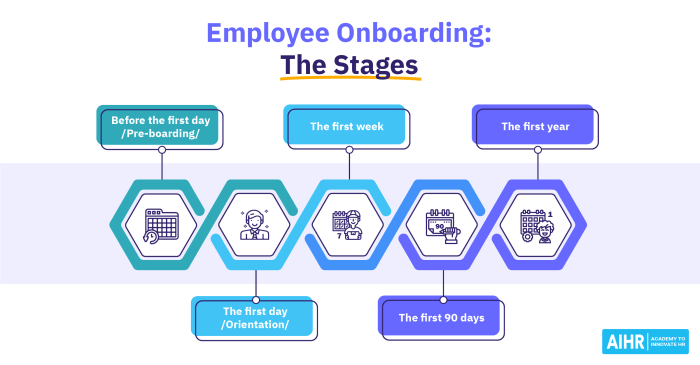
Effective onboarding is crucial for employee success and organizational growth. However, many organizations face significant hurdles in creating a seamless and engaging onboarding experience. Understanding these challenges and implementing proactive solutions is vital for maximizing the return on investment in new hires.Successful onboarding goes beyond paperwork and introductory meetings; it’s about fostering a sense of belonging and equipping employees with the tools and knowledge they need to thrive.
Failing to address common onboarding challenges can lead to higher turnover rates, decreased productivity, and a negative impact on company culture.
Common Onboarding Challenges
Organizations frequently encounter several recurring obstacles during the employee onboarding process. These challenges often stem from a lack of planning, inadequate resources, or insufficient communication. Addressing these issues requires a multi-faceted approach that involves careful planning, consistent communication, and a commitment to creating a supportive environment.
- Lack of Clear Goals and Expectations: New hires often lack clarity regarding their roles, responsibilities, and performance expectations. This ambiguity can lead to confusion, frustration, and decreased productivity.
- Inadequate Training and Development: Insufficient training can leave new employees feeling unprepared and overwhelmed. This can hinder their ability to perform their job effectively and contribute to the team.
- Poor Communication and Feedback: A lack of consistent communication and constructive feedback can leave new employees feeling isolated and unsupported. This can negatively impact their morale and job satisfaction.
- Overwhelming Paperwork and Processes: Excessive paperwork and overly complex processes can create a negative first impression and detract from the onboarding experience.
- Lack of Social Integration: Failure to integrate new hires into the company culture and team dynamics can lead to feelings of isolation and hinder their ability to build relationships with colleagues.
Strategies for Overcoming Onboarding Challenges
Implementing effective strategies can significantly mitigate the challenges associated with employee onboarding. These strategies should focus on creating a structured, engaging, and supportive experience for all new hires. A well-designed onboarding program should address both the practical and social aspects of integrating new employees into the organization.
- Develop a Comprehensive Onboarding Plan: A well-defined plan outlining clear goals, timelines, and responsibilities is essential. This plan should include a detailed schedule of activities, training sessions, and performance reviews.
- Invest in High-Quality Training and Development: Provide new hires with comprehensive training that covers all aspects of their role. This training should be engaging, relevant, and tailored to their specific needs.
- Establish Regular Communication Channels: Create opportunities for regular communication and feedback. This can include one-on-one meetings with managers, team meetings, and informal social gatherings.
- Streamline Processes and Paperwork: Simplify onboarding paperwork and processes to reduce administrative burden and create a positive first impression. Utilize technology to automate tasks wherever possible.
- Foster a Supportive and Inclusive Environment: Create a welcoming and inclusive environment where new employees feel comfortable asking questions, seeking support, and sharing their ideas. Implement mentoring programs or buddy systems to help new hires integrate into the team.
Creating a Supportive and Inclusive Onboarding Experience
An inclusive onboarding experience is vital for attracting and retaining diverse talent. This involves creating a welcoming environment that values the contributions of all employees, regardless of their background or identity. Organizations should actively promote diversity and inclusion throughout the onboarding process, ensuring that all new hires feel valued and respected.
“A successful onboarding program not only helps new employees become productive members of the team, but it also fosters a positive and inclusive work environment.”
- Diversity and Inclusion Training: Include diversity and inclusion training as part of the onboarding program to educate new hires on the company’s commitment to diversity and inclusion.
- Mentorship and Buddy Programs: Pair new hires with experienced employees who can provide guidance, support, and mentorship.
- Accessibility Considerations: Ensure that all onboarding materials and activities are accessible to employees with disabilities.
- Regular Feedback and Check-ins: Conduct regular check-ins with new hires to assess their progress and address any concerns or challenges they may be facing.
- Employee Resource Groups (ERGs): Encourage participation in ERGs to foster a sense of belonging and community.
Implementing a well-structured employee onboarding training program is a journey, not a destination. By thoughtfully considering the various aspects discussed—from content development and technology integration to ongoing evaluation and improvement—organizations can cultivate a positive and productive environment for new hires. This leads to increased employee engagement, reduced turnover, and ultimately, a stronger, more successful organization. The key takeaway is that a proactive and comprehensive approach to onboarding is an investment that yields significant returns.
Top FAQs
What is the ideal length of an employee onboarding program?
There’s no one-size-fits-all answer. The ideal length depends on the role’s complexity and the organization’s structure. However, a comprehensive program should ideally span several weeks, incorporating both initial orientation and ongoing training.
How can I measure the ROI of my onboarding program?
Track key metrics such as employee retention rates, time-to-productivity, and employee satisfaction scores. Compare these metrics before and after implementing improvements to your onboarding program to gauge its impact.
How do I adapt onboarding for remote employees?
Utilize virtual communication tools for orientation, training, and ongoing support. Ensure that remote employees have access to all necessary resources and feel connected to the company culture.
How often should onboarding programs be reviewed and updated?
Regularly review your program (at least annually) to ensure it remains relevant, effective, and aligned with the company’s evolving needs and goals. Gather feedback from new hires and managers to identify areas for improvement.

